What Causes Humidity?
Humidity, that invisible presence that makes the air feel heavier on a hot day or gives you a chill during winter.
But exactly what causes humidity?
In this article, we’ll unravel the mysteries behind humidity, from its definition to the factors that bring it into play, both high and low, and how both can affect you in major ways
So, let’s dive into the world of atmospheric moisture and discover what causes humidity and how it affects our homes and well-being.
Article Chapters
What is Humidity?
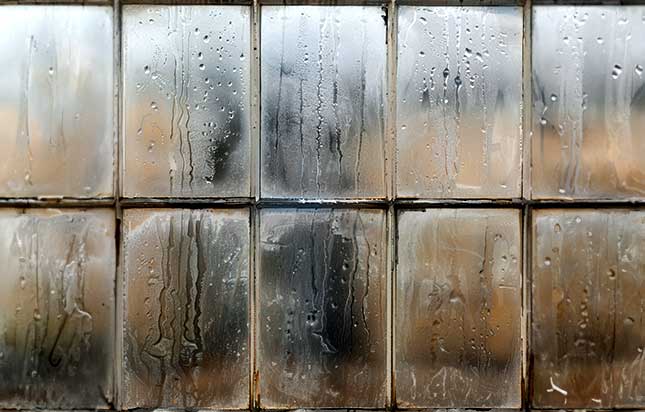
Humidity is the measure of moisture or water vapour present in the air.
Expressed as a percentage, it defines the amount of water vapour relative to the maximum the air could hold at a given temperature.
This invisible yet influential component of our atmosphere plays a vital role in shaping our daily experiences and comfort levels.
Humidity levels can vary based on geographic location, weather conditions, and human activities.
High humidity can make the air feel warmer, affecting our perception of temperature, while low humidity can lead to dry conditions that impact our skin, respiratory comfort, and the health of our surroundings.
Understanding humidity is essential for managing our indoor environments, ensuring comfort, and mitigating potential issues associated with excessive or inadequate moisture in the air.
What Causes Humidity?

Humidity is primarily caused by the water cycle, a natural and continuous process that involves the transformation of water between liquid and gaseous states.
The sun’s energy drives evaporation, converting liquid water from oceans, lakes, and the earth’s surface into water vapour.
This vapour rises into the atmosphere, where condensation occurs as the air cools, turning the water vapour back into liquid form, creating clouds and leading to precipitation.
Human activities also contribute to humidity indoors.
Daily tasks like cooking, showering, and even breathing release moisture into the air.
Inadequate ventilation can trap this moisture indoors, elevating humidity levels.
What Causes High Humidity in a House?
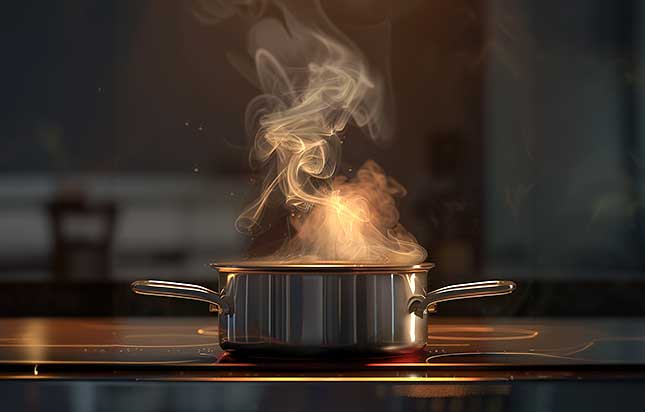
High humidity in a house is often a result of various daily activities and environmental factors.
The main factors of high humidity in a house are:
Everyday Activities and Poor Ventilation
High humidity in a house often stems from routine activities that introduce moisture into the air.
Cooking, showering, and even breathing release water vapour, and when proper ventilation is lacking, this moisture becomes trapped indoors.
Poorly ventilated spaces inhibit the escape of humid air, contributing to elevated humidity levels within the house.
Water Leaks and Insufficient Insulation
Water leaks or inadequate insulation can be significant contributors to high humidity.
Intrusions of water, whether from leaks, a blocked drain, or seepage, introduce additional moisture into the home.
Insufficient insulation can exacerbate the problem by allowing external humidity to infiltrate indoor spaces.
Addressing these issues promptly is crucial to preventing prolonged exposure to high humidity.
Regional Climate and Seasonal Factors
The natural climate of a region can also impact indoor humidity.
Areas with naturally high outdoor humidity levels may experience a transfer of moisture indoors.
During warmer seasons, when windows are often closed, and air conditioning may not be in use, humidity can accumulate within the house.
What are the Issues of High Humidity in a House?
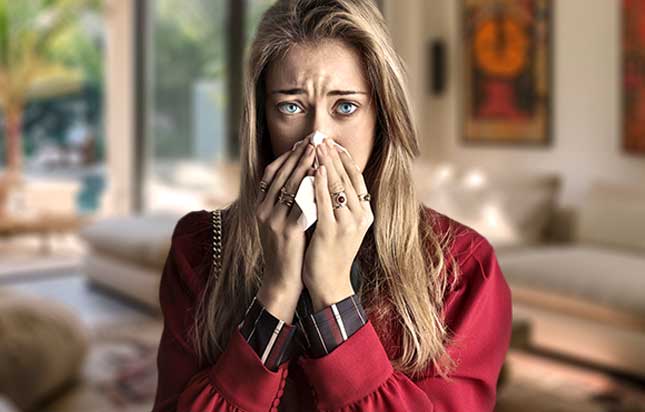
High humidity can cause a number of issues within your house.
The main issues are:
Health Concerns and Allergies
High humidity in a house can give rise to various health issues, with mould and mildew thriving in damp environments.
Mould spores, released into the air, can be inhaled, leading to respiratory problems, allergies, and exacerbating conditions like asthma.
Dust mites, another common allergen, flourish in humid conditions, contributing to skin and respiratory irritations.
Structural Damage
Excessive moisture poses a significant threat to the structural integrity of a house, such as wet rot.
Prolonged exposure to high humidity levels can lead to the decay of wood, corrosion of metal, and the deterioration of other building materials.
This not only compromises the durability of the structure but also necessitates costly repairs.
Reduced Comfort and Energy Inefficiency
High humidity can make the indoor environment feel warmer than it actually is, diminishing overall comfort.
This can lead occupants to rely more on air conditioning, resulting in increased energy consumption and higher bills.
The perceived temperature rise due to humidity can create an uncomfortable living space, affecting daily activities and quality of life.
Increased Pests
Insects such as cockroaches and silverfish thrive in humid conditions.
High humidity levels provide an ideal breeding ground for these pests, leading to increased activity within the house.
Controlling humidity becomes essential in mitigating the risk of pest infestations and maintaining a hygienic living environment.
Odours
The growth of mould and mildew in high humidity conditions is often accompanied by unpleasant odours.
Musty smells permeate the air, creating an unhealthy and uninviting atmosphere.
These odours not only affect the indoor air quality but can also be challenging to eliminate without addressing the root cause of high humidity.
How Can High Humidity be Reduced?
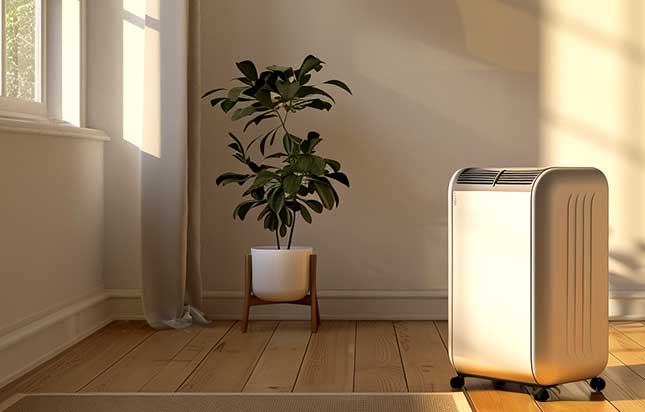
High humidity can cause numerous issues, luckily there are ways to help.
Improving Ventilation
Enhancing ventilation is a fundamental step in reducing high humidity levels within a house.
Adequate airflow helps disperse moisture and prevents its accumulation in enclosed spaces.
Simple measures, such as opening windows and using exhaust fans in kitchens and bathrooms, promote efficient ventilation, allowing humid air to escape and fresh air to circulate.
Addressing Water Leaks
Promptly addressing water leaks and seepage is crucial in mitigating high humidity.
Identifying and repairing any leaks in the roof, walls, or plumbing systems prevents the continuous introduction of moisture into the house.
This proactive approach minimises the risk of prolonged exposure to high humidity and the associated problems it brings.
Dehumidifiers
Dehumidifiers are effective appliances designed to extract excess moisture from the air, reducing humidity levels in enclosed spaces.
These devices are particularly useful in damp areas such as basements or bathrooms.
By condensing humid air into water and collecting it in a reservoir, dehumidifiers play a vital role in creating a healthier and more comfortable indoor environment.
Maintaining a Comfortable Indoor Temperature
Maintaining an appropriate indoor temperature is another strategy for humidity control.
Higher temperatures can enhance the air’s capacity to hold moisture, preventing condensation and reducing humidity levels.
Air conditioning systems not only cool the air but also act as dehumidifiers, removing excess moisture during the cooling process.
Moisture Absorbers
Moisture absorbers, such as silica gel packets or bamboo charcoal, can be strategically placed in areas prone to high humidity.
These substances absorb excess moisture from the air, helping to maintain balanced humidity levels.
Sealing Windows and Doors
Properly sealing windows and doors prevents the intrusion of outdoor humidity, contributing to a more controlled indoor environment.
Weather stripping and caulking are effective methods to seal potential entry points, minimising the impact of external factors on indoor humidity.
What Causes Low Humidity in a House?
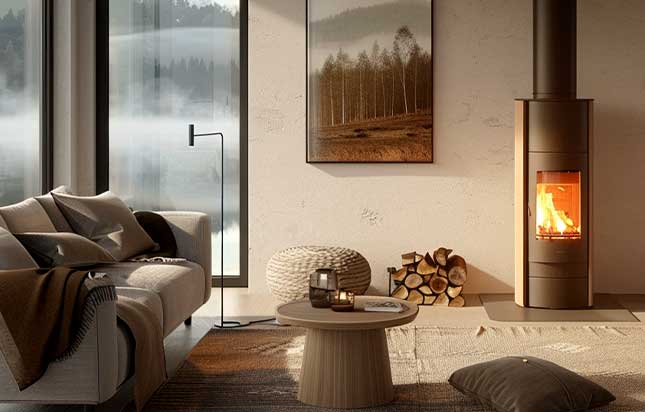
Low humidity in a house can be attributed to various factors that contribute to a lack of moisture in the air.
External Weather Conditions
During cold weather, the air holds less moisture, leading to lower humidity levels.
Heating systems commonly used in homes, such as central heating or space heaters, further contribute to dry indoor air by accelerating the evaporation of moisture.
Insufficient Ventilation
Poor ventilation can hinder the introduction of fresh, humid air into the house.
Enclosed spaces without proper airflow allow dry conditions to persist, reducing humidity levels.
Heating Appliances
Certain heating appliances, like wood-burning stoves, can intensify low humidity.
These devices generate heat without introducing moisture, leading to an overall drying effect on the indoor environment.
Seasonal Changes
Winter, in particular, tends to be associated with lower humidity levels due to the colder air’s reduced capacity to hold moisture.
In regions with harsh winters, households often experience lower humidity during this season.
Indoor Plants
While plants contribute positively to indoor air quality, some types of plants release moisture through a process called transpiration.
The presence of specific plants can inadvertently lower humidity levels in enclosed spaces.
What are the Issues of Low Humidity in a House?

While generally not as big an issue as high humidity, low humidity can still cause a range of problems.
Respiratory Issues
Low humidity in a house can lead to a range of health discomforts and respiratory issues.
Dry air tends to irritate the respiratory tract and mucous membranes, potentially causing dry throat, coughing, and nasal discomfort.
Individuals with pre-existing respiratory conditions, such as asthma, may experience exacerbated symptoms in a low-humidity environment.
Dry Skin and Irritated Eyes
Insufficient moisture in the air contributes to skin dryness, leading to discomfort and potential skin issues.
Dry air can also irritate the eyes, causing redness, itching, and an overall uncomfortable sensation.
These conditions can be particularly problematic during winter months when both indoor heating and cold outdoor air contribute to low humidity levels.
Damage to Wood
Wooden furniture and musical instruments are sensitive to changes in humidity.
In a low-humidity environment, wood tends to lose moisture, potentially causing it to crack, warp, or shrink.
This can lead to damage and degradation of these items, affecting their longevity and aesthetic appeal.
Static Electricity
Low humidity levels contribute to the buildup of static electricity, leading to annoying shocks and disruptions in electronic devices.
This issue can be particularly pronounced in homes with electronic equipment and can cause inconvenience and potential damage to sensitive devices.
Impact on Indoor Plants
Indoor plants require a certain level of humidity for optimal growth.
In a house with low humidity, plants may struggle to thrive, leading to issues such as wilting, browning of leaves, and a generally unhealthy appearance.
How Can Low Humidity be Improved?
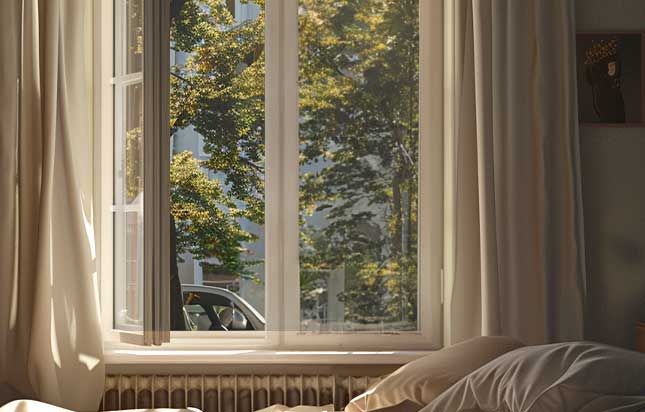
You can raise humidity using the following methods:
Using Humidifiers
One of the most effective ways to improve low humidity in a house is by using humidifiers.
These devices add moisture to the air, creating a more comfortable indoor environment.
Humidifiers come in various types, including evaporative, ultrasonic, and steam vaporizers, providing flexibility in choosing the most suitable option for different spaces.
Placing Water Basins Near Heat Sources
Strategic placement of water basins near heat sources, such as radiators or heating vents, helps introduce moisture into the air.
As the water evaporates, it contributes to raising humidity levels.
This simple and cost-effective method can be particularly helpful in small rooms or during the winter months when heating systems are in use.
Proper Ventilation
Ensuring proper ventilation is crucial for managing humidity levels.
Opening windows and doors periodically allows fresh, humid air to enter the house while letting stale, dry air escape.
Cross-ventilation is particularly beneficial in balancing indoor humidity, promoting a healthier and more comfortable living environment.
Avoiding Excessive Use of Heating Appliances
Limiting the use of heating appliances, especially those that do not introduce moisture into the air, helps prevent further drying of indoor spaces.
While heating is essential, striking a balance and avoiding excessive use can contribute to maintaining a more optimal humidity level.
Conclusion
Understanding what causes humidity and managing the levels within our homes is pivotal for creating a comfortable and healthy living environment.
Whether combating the challenges of high humidity or alleviating the discomforts of low humidity, a balanced approach is essential.
Employing strategies such as proper ventilation, the use of humidifiers, and mindful placement of water basins contributes to maintaining optimal humidity.
Striking this equilibrium not only enhances indoor comfort but also safeguards against potential health issues and structural damage.
For help with your humidity issues, get in touch with us here at KD Pumps.


Comments are closed.